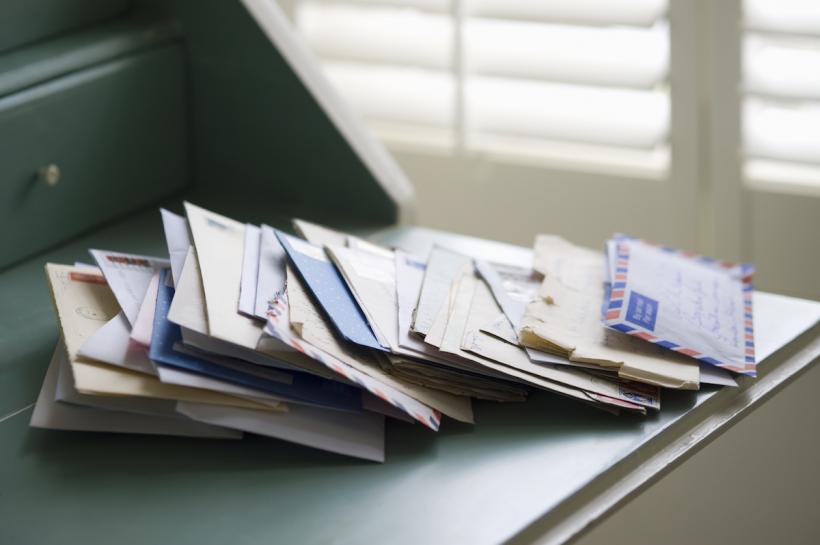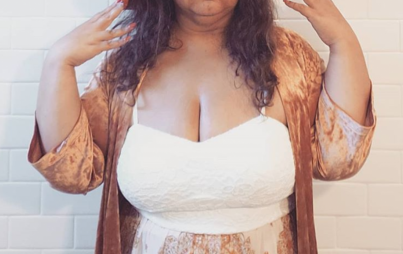
What if long distance saved our relationship?
This article first appeared on The Good Men Project and has been republished with permission.
The words rang crisply in my ear, her voice both calm and inquisitive on the other end of the phone. In the three years we had been dating, the longest we had ever spent in the same place was 35 days. How could she possibly think there was a silver lining to this marathon?
“What do you mean?” I asked her, sipping my chai, trying to let the caffeine do the heavy lifting as I wrapped my head around her words.
“Well, we’ve both changed the way we communicate with each other. Don’t you think?”
Ah. She was referring to the letters. How could I forget?
We may have been FaceTiming this evening, but technology was definitely late to the chase in our relationship. When Sana first left for the Peace Corps in Micronesia, specks of islands I could not even identify on a map, we had made peace with the reality that internet would be intermittent.
“I want you to fully enjoy graduate school,” she had said.
“Don’t be one of those guys. You know, the ones who leave their friends hanging because they have to go and Skype their girlfriends.”
It was then that she suggested we start writing.
Rather than obsess over daily or weekly Skype sessions, we decided we would write to each other, bridging the 13,500 km between us through carefully crafted letters.
I remember thinking I was dating a woman from a bygone era. In hindsight, this new approach had been predictable — I just hadn’t seen the signs. She never forgot a birthday and she religiously sent heartfelt cards, often to people she had only just met. She used a physical calendar to keep track of dates. She was the unapologetic, proud owner of a flip phone, a near-extinct breed of cell phones that continues to outlive its obituary writers. She did use Google Maps, but only to write down directions she would later attempt to follow. My stubborn, endearing Luddite.
As a hash-tagging, millennial, man-child myself, however, I couldn’t even remember which side of the envelope was reserved for the stamp. And now, she wanted me to send her letters? Did post offices still exist? Did they even send mail to Yap, Micronesia? What if the gaps between the letters widened the distance between us even more? My punctuated thoughts must have transformed my face into the anxiety-ridden expression she had seen a thousand times before because she immediately reassured me:
“I write really detailed letters, Mohit. You are going to love this. Trust me — just give it a try.”
You Might Also Like: How Love Letters Help Keep Your Love Alive
The first weeks after the gut-wrenching goodbye were the hardest, but time passed more quickly once we settled into a routine. She ate breadfruit and tapioca in Yap, as she dedicated her time to lesson planning and curriculum development. I scrambled from Boston to Cambridge on the M2 shuttle week after week, eager to soak in every lecture on public health or human rights.
As the letters started arriving though, I discovered a whole new side of her I had never known.
Through her 17-page letters, which she diligently sent every three weeks, I felt the sea breeze, heard the boisterous children, and saw the morning sunrises. It was hard to believe this was the same person who had to be probed five times about her day to receive a lackluster “great — nothing to report” in return back when we first started dating. I remembered my scrambling attempts to claw my way past the walls she had constructed, barriers that had finally vaporized into thin air. Her letters breathed new life into our relationship and opened a window into the inner workings of her mind.
When we finally decided to shift our relationship to the 21st century by purchasing an iPhone and investing in an internet connection for her island hut however, heartfelt letters gave way to more regular FaceTime conversations. Now, I could see the very things I had conjured up from the recesses of my imagination. Seeing her face as I drank my evening chai in my cozy apartment every day was a new source of comfort, a reminder of simpler times when we shared warm beverages in harsh winters.
And yet, the phone conversations were beginning to alter the way we communicated with one another. Our thought-provoking heart-to-hearts over reams of pages were slowly being replaced by the mundane details of our day-to-day lives. We still had enough to talk about for two hours at a stretch, but we were only paying lip service to the nuances that were previously captured by pen and paper.
But then, a remarkable thing happened.
A few weeks after we entered the internet age of our relationship, another letter arrived! This was unchartered territory. Letters AND FaceTime? How exactly would we handle this? If I wrote about my lousy day, what would I tell her over FaceTime? ‘Hi. Just wrote you a long letter. Nothing to update. What’s up with you?’
Often, I would pick up the phone, excited to talk to the one person who always had an attentive ear for any problem plaguing me that day, before remembering she had already left for school. Ugh! We only had a short window to talk, and our schedules often did not match, except on the weekends. And so, I would put down the phone and pick up my pen, communicating the frustrations of my day in an uncensored, unfiltered stream of consciousness.
Stamped. Postmarked. Off it went.
The weekends always came quickly, with the predictable punctuality that eluded the delivery of my rambling letters. Zzzzzzzz. Zzzzzzzz. I picked up the FaceTime call with alacrity. Her face had barely materialized on the screen, when I exclaimed excitedly:
“Guess what?!”
“Hi! What?”
“I just wrote you a long letter. I don’t want to tell you too much about it, since you’ll read it soon, but…”
Too late. Off I went, unstoppable in my zeal to reveal everything I had written down a few days prior. Three weeks later, she would hear the same concerns when she got my letter, but the passage of time had provided a resolution in hindsight. In this manner, we continued to relive conversations through our love-hate relationship with technology, a polygamous marriage between letters and iPhones that shrunk the unmanageable distance between us.
At the end of each letter, we would often ask each other questions: 5-10 questions that had to be addressed by the person the next time we spoke or wrote, questions we had never asked each other before. Our very own 36 questions to fall in, or perhaps stay in, love. What’s your most painful memory from childhood? What worries you most about our future together?
I remember the last of these questions vividly. The lack of proximity to one another had allowed us to breach a level of vulnerability and address a topic we had avoided through much of our relationship: race. When we first took that tentative leap from coworkers to romantic partners, race hadn’t hit me yet as a potential problem. We had been in the honeymoon phase, too enveloped to worry about what the future held. Sure, I was Indian and she was Japanese American. Sure, I had only dated Indian women before her. But our value systems led to a shared consciousness that was deeper than anything I had experienced before. That’s what mattered, right? Never mind the fact that nobody in our respective families had ever married outside their race.
But, would my family ever embrace her?
Ours was a classic love saga that would make Bollywood scream with delight — you know, as long as the steamy plot stayed in the movies where it belonged and didn’t trickle into our own lives and, dare I say it, corrupt the sanctity of our culture. God forbid!
Except — it already had.
My South Indian father had gone against his parents’ wishes to marry my North Indian mother, straining relations that weren’t normalized until their first child was born. Me. It was in my blood. I was meant to bridge racial divides in our family. My parents had dared to blur caste and state boundaries. If my parents looked North and South, I was only taking it further in another cardinal direction by looking East. Far East. They had to understand!
Fortunately, my parents did understand. For them, the problem wasn’t Sana’s race, but rather this 21st century, non-Indian culture of dating. “How do you suddenly know she’s the one? Commitment is important, Mohit. Oh and remember- no living together. Only hugging.” My mom loved to say that phrase like a mantra. “Only hugging.”
I used to feel guilty addressing that innocent request, but long distance saved me from that inner struggle as well. I never had to lie to my parents about living together and the only thing I was hugging was my computer screen as I stared at Sana’s pixelated face. The letters had not only allowed Sana and I to connect on a deeper level, but also respect certain cultural boundaries even as we blurred others.
We only have four months and 15 days left until her Peace Corps service comes to an end and we are reunited. As I reconcile my fears with my excitement, I come to terms with the fact that she will soon meet my family.
I still worry.
What if my family does not accept her as “the one?”
Armed with my arsenal of letters and call logs littered with Sana’s name however, I feel reassured.
The intimacy and vulnerability buried in those pages are not mere abstractions on paper, but a shared consciousness far deeper than superficial similarities based on caste, religion, or class. For this renewed sense of faith in what we have, I am grateful.
Long distance had a silver lining after all.








